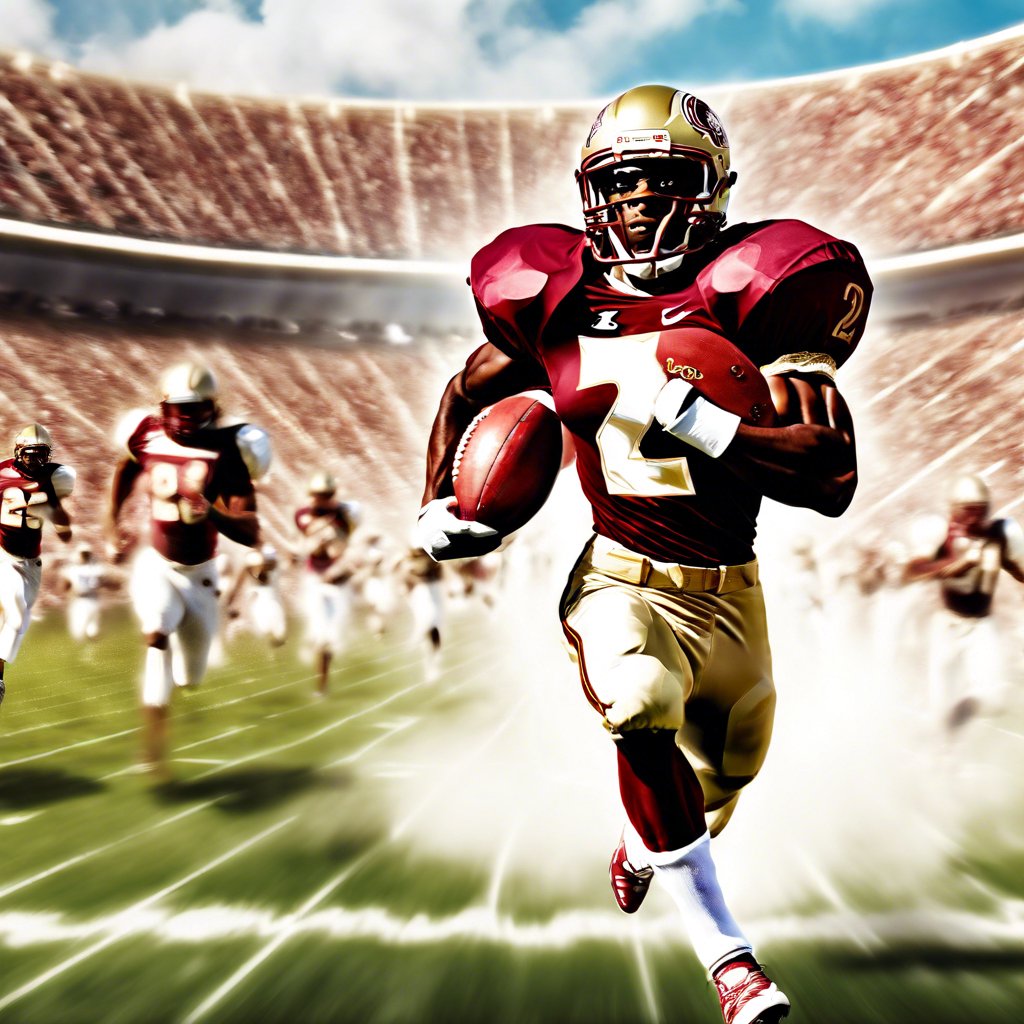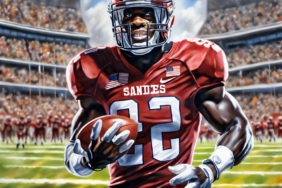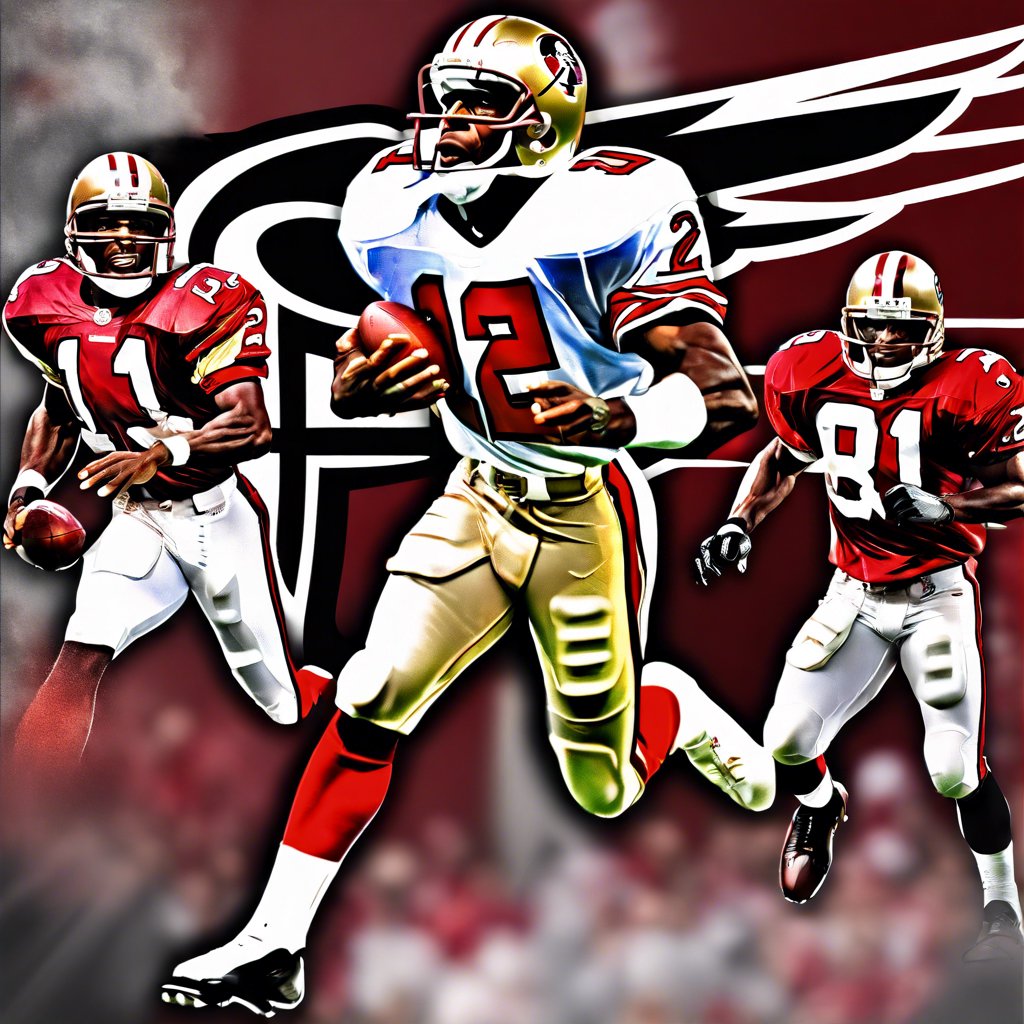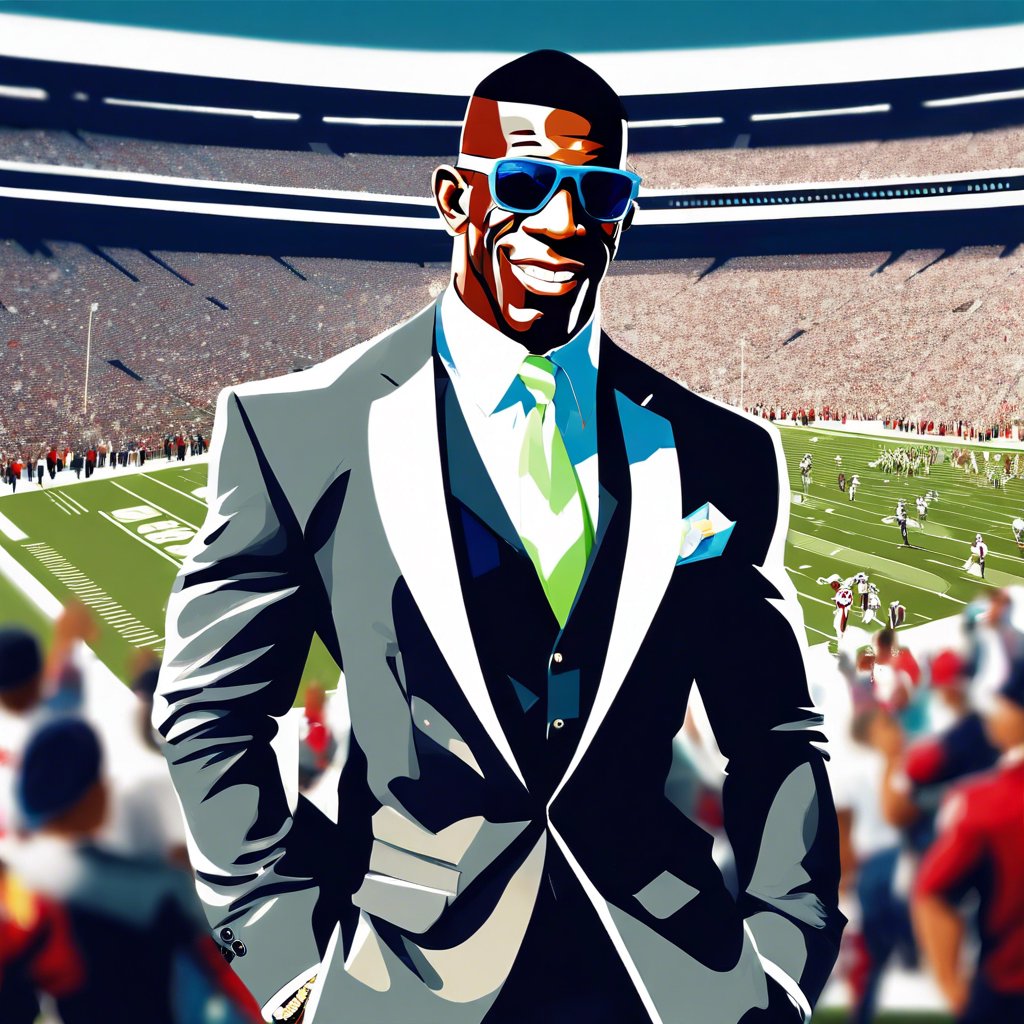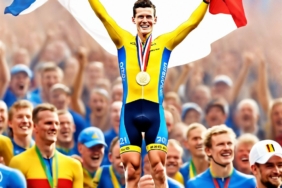The Legend of Deion Sanders at Florida State
During the 1980s, legendary coach Bobby Bowden made a strategic choice to keep his Florida State football team in a nearby hotel in Thomasville, Georgia, the night before games. This was a tactical move to minimize distractions from the vibrant college life in Tallahassee. On game day, the Seminoles would embark on a 45-minute bus ride to Burt Reynolds Hall, a dormitory situated on Stadium Avenue, to drop off their gear before heading to the locker room. However, in 1988, as Deion Sanders’ fame skyrocketed and the persona of “Prime Time” began to flourish, a limousine awaited him outside the dorm. Initially, there was some confusion among the players, but it soon turned to excitement as Sanders flashed his trademark smile.
He had orchestrated a private ride, ensuring that he arrived at the late-November showdown against Florida with flair. “Oh, he was going to make that entrance,” recalled Brad Johnson, the quarterback of that Seminoles team who later enjoyed a 17-season career in the NFL. “I mean, who would even think of stuff like that?” added then-FSU safety LeRoy Butler, who would later establish himself as a four-time first-team All-Pro player for the Green Bay Packers.
Before he made history as the only athlete to play in both a World Series and a Super Bowl, and long before he took on the role of Coach Prime, the dynamic and personal leader at Colorado, Sanders was a young quarterback learning an entirely new position. He was a multisport talent who dabbled in track and field for just one year, qualifying for the Olympic time trials before stepping away from the sport. Dominating as a cornerback, Sanders sometimes grew bored with the lack of action, allowing receivers to appear open just to lure the ball their way. He was a teenager who used to showcase his 360-degree dunks against fraternity brothers during intramurals, only to leave those pickup games to excel on the baseball diamond. Despite his flamboyant on-field persona, characterized by high-stepping and showboating, he was surprisingly quiet during practice, dedicated to honing his craft. He had a keen sense of branding at a time when few athletes did, famously signing his autograph with a dollar sign in place of the “S” in his last name. “We didn’t have money,” Butler remarked, “but in his mind, he was rich.”
Recruitment and Transition
The captivating stories from Sanders’ time at Florida State might seem hard to believe, but those who witnessed them swear by their authenticity. Defensive coordinator Mickey Andrews had not been tasked with recruiting southwestern Florida during his 26 years at Florida State. Yet, in 1984, an offensive assistant coach brought a potential recruit to his attention. This athlete was a left-handed quarterback playing in a wishbone offense at North Fort Myers High School, and there was little film available on him.
After the football season concluded, Andrews decided to visit the school. It was basketball season, so he opted to observe the young athlete on the court. “You can’t really hide skill on a basketball court,” Andrews noted. Sanders must have made quite an impression, as Florida State extended an offer for a football scholarship just days later. However, when Sanders arrived on campus, the coaching staff was divided on where he should play. The offensive coaches lobbied for him to be a wide receiver, while defensive coaches pushed for him to fill the cornerback position.
“It was spirited,” chuckled Mark Richt, a graduate assistant at the time. “In the end, after a good discussion, Coach Bowden just said if we’re ever going to win a championship here, we need to win with defense. So Coach Bowden was the final vote on why Deion started on defense.” Memories of those events nearly four decades ago have become a bit hazy, but participants recall that Sanders had played little to no cornerback prior to his arrival on campus.
During the initial practices, his exceptional athleticism was immediately apparent, even if his technique left much to be desired. “He had an awful lot to learn about playing that position,” Andrews reflected. “At that time, tackling was not a priority for him.” In 1985, during Sanders’ fifth collegiate game, Florida State faced off against Auburn, led by the electrifying running back Bo Jackson. On a pivotal play, Jackson broke free to the outside, with Sanders as the last line of defense. Sanders attempted a tackle but was swiftly stiff-armed into the ground. “Deion was about 175 pounds at the time, probably had never worked with weights,” Andrews recalled.
Rapid Evolution and Fame
Despite this initial setback, Sanders improved remarkably as the season progressed. Florida State had two sophomore cornerbacks starting ahead of him, but Sanders was eager to learn from them. “I think he wanted to pick their brains and learn that position,” said running back Sammie Smith. “But in all reality, there wasn’t too much they could teach him once he got over there because he was such a gifted athlete.” A month later, the starting lineup was adjusted, and Sanders emerged as the team’s top cornerback.
“He was better than me after about a week,” said Martin Mayhew, one of the sophomore cornerbacks who went on to have a nine-year NFL career and later became the general manager of the Washington Commanders. Mayhew had previously been a punt returner in high school and anticipated holding that role in college as well. However, Sanders quickly surpassed him on the depth chart.
“I’m like, ‘This dude just got here, and they’re already putting him in front of me? And I’m not even getting a shot?’” Mayhew recalled. Frustrated, he protested the coaching staff’s decision by skipping the punt return portion of the next practice, convinced the coaches would recognize that a freshman couldn’t handle the job. “Nobody even noticed that I wasn’t there,” he laughed. “No punishment, nothing. I never had to go back out there again because he was the dude and I wasn’t.”
As Sanders developed his cornerback skills, he became a nightmare for the offense during practice. Quarterbacks complained to coaches that one-on-one passing drills became futile when Sanders was in the mix. “It wasn’t even productive for the offense,” Chip Ferguson, a quarterback at FSU, remarked. “We had to run a trick play against him every time because you couldn’t run a normal play.” Yet, Sanders refrained from showboating after making interceptions during practice. In those sessions, he was focused and serious, a stark contrast to the flamboyant persona he exhibited on game days. “Because he was working,” Johnson explained. “But on game day, it was different.”
Confronting Greatness
Throughout his four seasons at FSU from 1985-1988, Sanders recorded an impressive 14 interceptions. In 1988, the Seminoles traveled to Michigan State for a highly anticipated matchup featuring arguably the nation’s best wide receiver, Andre Rison, and cornerback, Deion Sanders. Rison, a senior, was breaking every Spartans school record, and typically, Florida State wouldn’t assign Sanders to shadow a specific wide receiver. However, this game called for an exception.
Before the opening play, Sanders was seen waiting for Rison near the Michigan State sideline, confidently declaring that Rison wouldn’t be a viable option that day. “I don’t know if there’s a word above ‘arrogance’ for when you’re on the field wearing No. 2 with a long towel hanging down and looking at the sideline, telling them, ‘You can’t throw it to your No. 1 receiver today,’” Butler said. “We used to watch that and marvel at it.” Rison ended the game with just one catch, and the Seminoles triumphed 30-7. “That’s when I was like, ‘This dude is something else,’” Mayhew reflected. But rather than celebrating, Sanders was disappointed that he didn’t record any interceptions, expressing to the coaches, “They won’t throw the ball my way.”
Sanders began to masterfully bait receivers, allowing them to beat him off the line of scrimmage before making his spectacular plays. In a game against Miami, he let the legendary Michael Irvin get past him, knowing he could outrun him to make the interception. “Because he knew he was faster than Michael Irvin,” Mayhew explained. “Then he ran him down, jumped over him, and intercepted the pass.”
Defining Moments
In September 1988, the Seminoles faced Clemson in a top-10 showdown. Trailing in the fourth quarter, Florida State managed to force a punt. On the sideline, Sanders confidently proclaimed to his teammates that he would return the kick for a touchdown. “Kind of like Babe Ruth calling his home run,” Andrews said.
When Sanders lined up deep to receive the punt, he taunted the home crowd and provoked the opposing coaches. By this point in his senior year, it was clear to everyone that punting to Sanders was a risky move. Yet, teammates believed his antics would compel opposing coaches to test him. After watching him dance and showboat, they felt challenged to throw at Sanders. “He would (tick off) coaches, and they’d go after him,” Butler said. So when Clemson decided to punt to him, Smith noted, “They were crazy enough to do it.”
Sanders returned the punt for a stunning 76-yard game-winning touchdown, solidifying his status as a campus hero. Teammates were eager to capitalize on his newfound celebrity, knowing that having Sanders around could help them cut lines at bars and score free drinks. They would often promise bouncers at The Moon nightclub that Sanders was en route, even if he never showed up. “We used to beg him to go to parties because he doesn’t drink, but we needed him to get in,” Butler said. “He had a goal, and he didn’t want anything to mess his brand up.”
Unmatched Athleticism
Sanders frequently participated in intramural basketball games with fellow football players, using it as a way to maintain fitness in the offseason and settle locker-room debates about who was the best player among them. Typically, Sanders would arrive at the gym just minutes before the game started. As the rest of the team warmed up, he would grab a basketball, sprint toward the hoop, and effortlessly execute a 360-degree dunk. After that, he would declare himself ready to play.
“We used to play these frat boys, and they did not like that,” Butler recalled. “He had a cold jumper, too. The guy could’ve played in the NBA.” At the start of one spring intramural game, Sanders informed his team that they needed to play quickly because he had a baseball game to attend afterward. “I was like, wait, wait, wait, wait,” Butler said. “You’re our best player in intramurals, and you’re going to get tired — and then go play baseball? He said, ‘Yeah.’” Butler was left in disbelief, thinking, “This man is not human.”
“Everybody gets tired, but some people are born with that gift. I think he’s arguably the best athlete ever known to man.” His reputation continued to grow during the spring of his junior year. While with the baseball team in Columbia, South Carolina, Sanders learned that the track team had lost a member of its 4×100 meter relay due to an injury. The meet that weekend was also in South Carolina, so Sanders volunteered to step in between a doubleheader with the baseball team. Track coach Dick Roberts initially agreed to let Sanders join, unaware that he had never actually run track before and didn’t know how to properly pass a baton in a relay.
Roberts wanted Sanders to run the final leg, typically the domain of Smith, the football team’s running back. However, Sanders graciously declined, stating, “That’s Smith’s spot. He’s earned it.” Sanders was not only quick but humble, showcasing his character. After the first baseball game, Sanders and the baseball team made their way to the track, and as he approached the meet, he nonchalantly shed his jersey. Mayhew recalled, “He’s walking up to the meet and taking off his jersey while he’s walking. He comes up to the track, and 10 minutes later, he was running — and we ended up winning.”
Sanders’ new track teammates convinced him to stick with the sport the following year, claiming it would prepare him for the NFL Scouting Combine. The 4×100 relay quickly became a spectacle, with Smith perhaps being the only athlete on campus who could rival Sanders’ speed. They formed a team alongside future NFL first-round pick Dexter Carter and Arthur Blake, a two-time Olympic hurdler. Johnson wanted to support his teammates and initially planned to attend the track meet after playing a round of golf one Saturday morning. However, he was running late and feared he may have missed the event, only to spot Sanders in the parking lot wearing slippers and a bathrobe.
Johnson was puzzled, wondering why Sanders wasn’t preparing. When Sanders noticed him, he quipped, “You ever seen a cheetah stretch before it runs?” When Sanders finally committed to a full season of track and field, he was unfamiliar with the starting blocks for sprints. By season’s end, he clocked an impressive sub-10.3-second 100-meter dash, qualifying for the Olympic time trials. “Can you imagine if he had done track the whole time and trained?” Smith asked. “I mean, he was so tight and was not flexible at all. He could barely touch his toes standing up. But could you imagine if he had worked on that and had track and field in his background for years? There’s no telling how fast that cat would’ve run.”
Lasting Impact and Legacy
Word of Sanders’ exceptional speed spread like wildfire, attracting scouts to Florida State’s pro day that spring. He brought his track cleats with him out of routine and clocked an electrifying 4.30 seconds in the 40-yard dash. However, scouts informed him that the time wouldn’t count as it wasn’t fair to run in track shoes. They requested he don his football cleats, but Sanders hadn’t brought them along. Instead, he slipped on the high-top sneakers he had arrived in and ran the 40 again, achieving an even more astonishing time of 4.28 seconds.
“Then he looked at the scouts and said, ‘Y’all come back tomorrow, and I’ll do it again,’” Johnson recounted. The remainder of Sanders’ career is well-documented: six NFL All-Pro selections, a Defensive Player of the Year award, and two Super Bowl victories. He enjoyed nine seasons in Major League Baseball, made a World Series appearance, notched 186 stolen bases, and recorded 154 extra-base hits. His legendary helicopter ride from an NFL game to a critical baseball game, coupled with his impactful coaching tenure at Jackson State, his dedication to shining a spotlight on HBCUs, and his dynamic recruitment of Travis Hunter, all contributed to his enduring legacy.
To those who witnessed his journey at Florida State in the late ’80s, he will always be remembered as the hard-working player in practice who transformed into a showstopper on game days, who connected with walk-ons and equipment managers, leaving them in awe of his on-field prowess. “There’s only one Deion,” Smith concluded. “I don’t know that there will be another Prime Time.”
